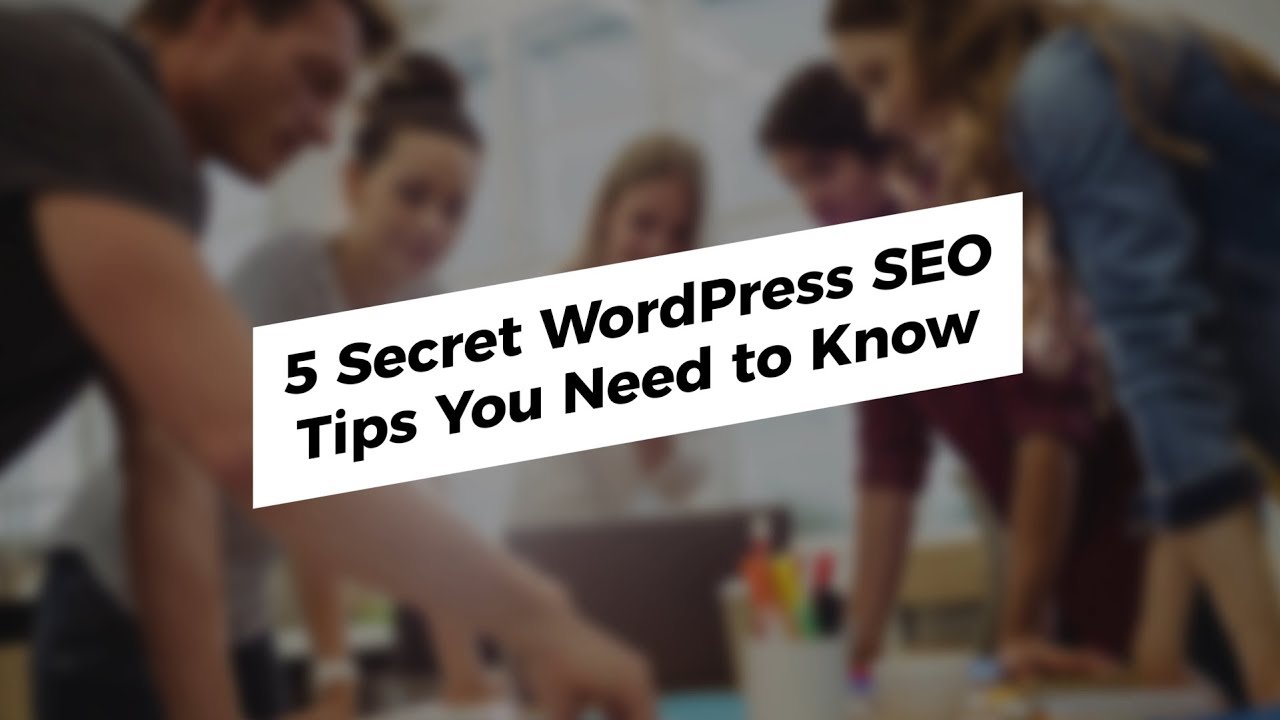5 Secret WordPress SEO Tips You Need to Know
Search Engine Optimization Tips
5 Secret WordPress SEO Tips You Need to Know
Read the full article here:
1. Implement schema markup
Schema markup is what you see when SERPs show more than just the meta description of a site — highlighting ratings, prices, site menus, and sometimes even forms.
Schema markup can also help your website take up more physical space on the results page — increasing your visibility and driving more traffic to your site.
To add schema markup to your WordPress site, visit Schema.org to get a custom code or use the Yoast SEO plugin.
2. Add infographics or videos to increase session time.
Infographics and videos in your content increase dwell time and click rate, while also decreasing bounce rate.
Infographics are the blending of information and graphics to easily communicate data to your audience.
They can increase the time your readers spend on a page and also improve the chances of them sharing your page on social media.
3. Create a structured navigation menu
A well-curated menu will help Google decipher your content and will improve the user experience by helping visitors find exactly what they are looking for.
Also, all the links in your top menu should be cohesive. Most menu structures start with Home and end with Contact, and the links you include in-between should flow naturally.
Remember! Having too many links in your menu and submenus can make your site more difficult for Google to read and will hurt your link value.
4. Create a click-worthy SEO title for higher CTR
Write for search engines and people. Make sure that your title includes your target keywords. So if your keyword phrase is: “teriyaki restaurant,” put that as far left in the title as you can.
Use numbers. People like numbers, so if your post is a list, or pertains to a specific year, throw the number in the title. For example: “Top 15 Teriyaki Spots in Connecticut.”
Communicate value. Make sure you tell the users why they should click on your title. For example: “Best Teriyaki Spot in CT According To Meryl Streep.” Now there’s a post title I would click!
5. Answer commonly asked questions to make the search snippets
What kinds of questions are your buying personas asking? If you can accurately predict what they need, and you provide an SEO optimized answer, then you have a strong chance of getting your site ranked in search snippets.
So to start, use a tool like AnswerthePublic.com to gain insight on what these questions are and then ask yourself, “Do I have top ranking content that speaks to those questions?”
Here are my SEO tips for optimizing your WordPress content for featured snippets:
– Do a Google search with your target keywords and see what kind of content is getting featured in the zero position.
– In your post, place the target question inside an H2 heading and write the answer directly below. For maximum effect, keep your answer around 54 words.
– Ensure that your heading and answer are as close to the top of the page as possible.
– Hit publish and monitor your content to ensure it reaches and stays in the top 10 search results.
Subscribe to Our Channel:
https://www.youtube.com/user/TemplateMonsterCo/
Follow us:
Facebook https://www.facebook.com/TemplateMonster/
Twitter https://twitter.com/templatemonster
Instagram https://www.instagram.com/template_monster/
Pinterest https://www.pinterest.com/templatemonster/
Dribbble https://dribbble.com/TemplateMonster/
LinkedIn https://www.linkedin.com/company/templatemonster/
5 Secret WordPress SEO Tips You Need to Know
Read the full article here:
1. Implement schema markup
Schema markup is what you see when SERPs show more than just the meta description of a site — highlighting ratings, prices, site menus, and sometimes even forms.
Schema markup can also help your website take up more physical space on the results page — increasing your visibility and driving more traffic to your site.
To add schema markup to your WordPress site, visit Schema.org to get a custom code or use the Yoast SEO plugin.
2. Add infographics or videos to increase session time.
Infographics and videos in your content increase dwell time and click rate, while also decreasing bounce rate.
Infographics are the blending of information and graphics to easily communicate data to your audience.
They can increase the time your readers spend on a page and also improve the chances of them sharing your page on social media.
3. Create a structured navigation menu
A well-curated menu will help Google decipher your content and will improve the user experience by helping visitors find exactly what they are looking for.
Also, all the links in your top menu should be cohesive. Most menu structures start with Home and end with Contact, and the links you include in-between should flow naturally.
Remember! Having too many links in your menu and submenus can make your site more difficult for Google to read and will hurt your link value.
4. Create a click-worthy SEO title for higher CTR
Write for search engines and people. Make sure that your title includes your target keywords. So if your keyword phrase is: “teriyaki restaurant,” put that as far left in the title as you can.
Use numbers. People like numbers, so if your post is a list, or pertains to a specific year, throw the number in the title. For example: “Top 15 Teriyaki Spots in Connecticut.”
Communicate value. Make sure you tell the users why they should click on your title. For example: “Best Teriyaki Spot in CT According To Meryl Streep.” Now there’s a post title I would click!
5. Answer commonly asked questions to make the search snippets
What kinds of questions are your buying personas asking? If you can accurately predict what they need, and you provide an SEO optimized answer, then you have a strong chance of getting your site ranked in search snippets.
So to start, use a tool like AnswerthePublic.com to gain insight on what these questions are and then ask yourself, “Do I have top ranking content that speaks to those questions?”
Here are my SEO tips for optimizing your WordPress content for featured snippets:
– Do a Google search with your target keywords and see what kind of content is getting featured in the zero position.
– In your post, place the target question inside an H2 heading and write the answer directly below. For maximum effect, keep your answer around 54 words.
– Ensure that your heading and answer are as close to the top of the page as possible.
– Hit publish and monitor your content to ensure it reaches and stays in the top 10 search results.
Subscribe to Our Channel:
https://www.youtube.com/user/TemplateMonsterCo/
Follow us:
Facebook https://www.facebook.com/TemplateMonster/
Twitter https://twitter.com/templatemonster
Instagram https://www.instagram.com/template_monster/
Pinterest https://www.pinterest.com/templatemonster/
Dribbble https://dribbble.com/TemplateMonster/
LinkedIn https://www.linkedin.com/company/templatemonster/
source

